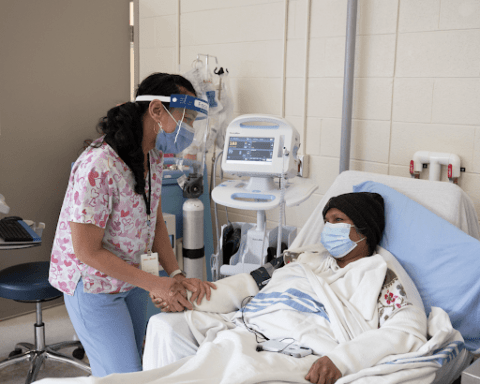Journalism students say they find value in learning how to report on immigration and race issues. Many would like to see more specialized courses focused on diversity and inclusive reporting.
“There’s never been a time in my life when this has been more important,” says second-year journalism student from the University of Toronto, Tijuana Turner, referring to the current refugee situation and Justin Trudeau pledging to bring 25,000 Syrians to Canada.
“For example, describing it as a ‘flood’ of refugees isn’t okay when most people associate a flood with disaster,” she explains.
Turner moved to Canada from Jamaica two years ago to study at the University of Toronto’s Scarborough campus (UTSC). She says the course “Covering Immigration and Transnational Issues” offered at UTSC, which teaches students to analyze news coverage, has helped raise her awareness.
“[D]escribing it as a ‘flood’ of refugees isn’t okay when most people associate a flood with disaster.”
The course includes material on how media outlets frame stories related to race and immigration and how these frames can shape people’s perspective. Before taking it, certain things went over Turner’s head, she explains, but she’s become more critical.
“You shouldn’t start by saying ‘Refugee Tom…’ That’s not inclusion, that’s ‘us vs. them.’ You should try saying, ‘Tom, who is a refugee,’” Turner explains.
Teaching critical journalism
datejie green is the Asper Fellow of Media at Western University and a lecturer at UTSC.
green teaches “Critical Journalism”, which she describes as a “mobilizing, embodied, intersectional approach to journalism” meant to give students a fresh set of eyes to critically engage journalism. The course examines how media cultures address gender, ability, class, sexuality and race.
“We want to learn about intersectional ways of thinking and mobilize that critical analysis to make sense of everything and write respectfully,” green shares. “These are not static, abstract ideas that we learn and leave in classrooms; these are things journalists need to have at their disposal.”
Class discussions involve examining the impact and importance of perspective in media. green’s objective is to cross cultural divides in a humanizing way. She says she is open with students about her experiences – as a woman, as someone who’s black, lives with mental illness and is a lesbian – and how it relates to perspective.
“That shouldn’t detract from my validity as a journalist or a teacher; it’s just a frame. But it allows me to explain how my body is experienced, why and what’s the impact,” green explains.
Students become aware of different perspectives, which helps journalists “not to write from pre-conceived ideas or ignorance.”
Fatima Al-Sayed is a second-year journalism student in green’s class. She says the course is “extremely important” because students become aware of different perspectives, which helps journalists “not to write from pre-conceived ideas or ignorance.”
“As a woman who wears a hijab, I know the image the media portrays of me because it’s my day-to-day life,” Al-Sayed explains. “I feel like my role in journalism is to change that perspective, but I can’t if I get pulled into that kind of thinking.”
Integrating diversity lessons throughout j-school
Specialized courses aren’t the only way to teach these concepts in journalism school. At Langara College in British Columbia, lessons about perspective and diversity are integrated into every course, explains Frances Bula, chair of the journalism program.
Bula says that in addition to having classrooms and newsrooms that are ethnically diverse, it’s crucial for students to understand the importance of diversifying their sources.
“From day one, we talk about the importance of diversity and the dangers of getting too comfortable talking with people from a similar age, gender, race, or income background,” Bula explains.
Journalists should also look to groups who may not have access to the media or may not speak perfect English, Bula adds.
Petti “Peg” Fong, the assistant department chair at Langara, says courses solely about reporting on race and ethnicity aren’t necessary for journalism students.
She adds, though, that it’s important for students to understand that audiences and sources come from all different backgrounds to help prevent stereotypes being perpetuated by the media. This is taught throughout other courses, she explains.
[N]ews gathering should be more inclusive … or else it runs the risk of stereotyping and misrepresenting.
Students’ role in addressing media bias
A study from Australia noted that negative and stereotypical coverage of Muslims can foster alienation, which plays into the hands of extremists, says Brad Clark, the journalism and broadcasting chair at Mount Royal University in Calgary. Clark did his doctoral dissertation on representations of ethno-cultural minorities in Canadian media.
Clark says that news gathering should be more inclusive, especially stories that focus on specific communities, or else it runs the risk of stereotyping and misrepresenting.
He also says that journalism students can play an important role in addressing implicit biases of mainstream media.
“They must be allowed to influence news gathering when it strays into the realm of the stereotypic,” he says. “Students need to understand that sometimes it is OK to explore the experience of race, that talking about race isn’t the same as being racist.”
These issues have become increasingly relevant for j-school students to explore, says Lysia Filotas, a second-year journalism student at Carleton University in Ottawa. Carleton, like Langara doesn’t have a course dedicated to reporting on race and ethnicity, but incorporates it in lessons, something Filotas finds valuable.
“As a reporter, it’s important to learn how these topics colour one’s world views and how not to project that onto someone else during the interview and writing process,” she explains.
Marcus is a poet, editor and freelance journalist based in Toronto. He currently works with New Canadian Media as an Editor and as a Freelance Writer for ByBlacks.com, The Edge: A Leader's Magazine and The Soapbox Press.




